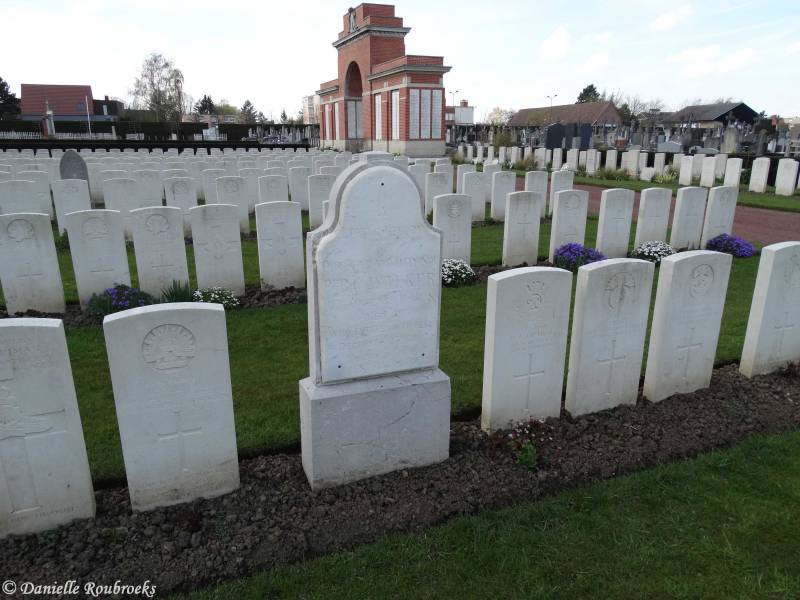Hazebrouck Communal Cemetery
Historical Information (Source: CWGC)
From October 1914 to September 1917, casualty clearing stations were posted at Hazebrouck. The Germans shelled and bombed the town between September 1917 and September 1918 making it unsafe for hospitals, but in September and October 1918, No.9 British Red Cross Hospital was stationed there. Commonwealth burials began in the communal cemetery in October 1914 and continued until July 1918. At first, they were made among the civilian graves, but after the Armistice these earlier burials were moved into the main Commonwealth enclosure. During the Second World War, Hazebrouck was garrisoned and was on the western flank of the area occupied by the British Expedionary Force until May 1940. The cemetery was used again, mainly for the burial of those killed in late May 1940 during the fighting which covered the retreat of the BEF to the Dunkirk-Nieuport perimeter
The cemetery now contains 877 Commonwealth burials of the First World War (17 of them unidentified) and 86 from the Second World War (20 of them unidentified). The Commonwealth plot, for the construction of which the town of Hazebrouck contributed 20,000 francs, was designed by Sir Herbert Baker. The War Graves Plot lies immediately inside the entrance to the cemetery.
Served with
- United Kingdom (781)
- Canadian (58)
- Australian (50)
- New Zealand (30)
- Indian (11)
Served in
- Army (906)
- Air Force (22)
- Navy (2)
Epitaph Private Edward Rust - Service N° 1830 - Yorkshire Regiment - 30 April 1915
Seriously wounded while advancing with his regiment in the fighting near St. Julien Sat. April 24. 1915 he was taken to the field hospital but was so eager to uphold the honour of his regiment and to serve his country that he returned next day to the firing line and remained with his comrades until they were relieved and died on april 30th courageous to the end and beloved by all who knew him.
Cost was three & a half pence per letter, spaces count as one letter: 395 letters x 3.50 pence = 1382.50 pence = £5.76
One Pound in 1915 had the purchasing power of about £97 today (2017)= £558.72 = 703,99 EUR !!!















































